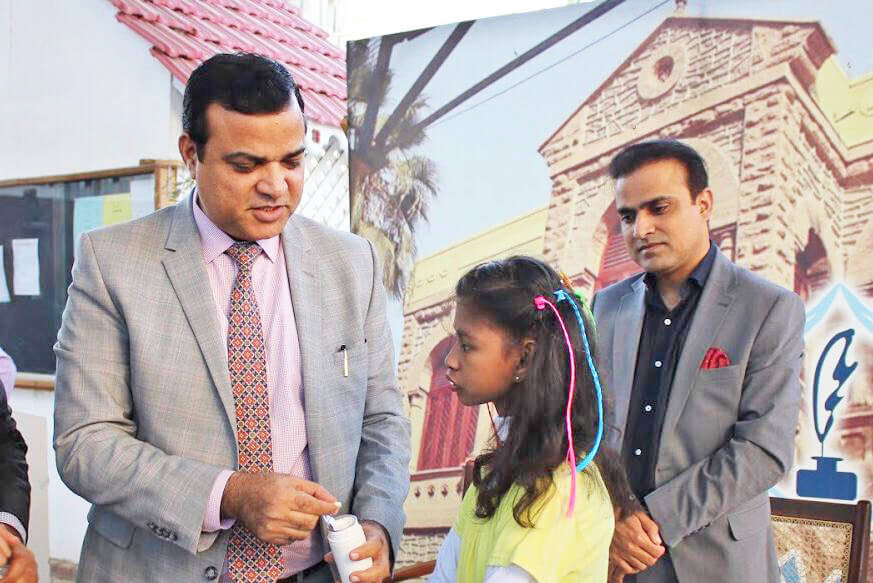Karachi children ‘need continued deworming activities’

By Our Correspondent
KARACHI: In the light of a survey of schools conducted in four provinces of the country, various NGOs in collaboration with the Sindh health and education departments ran a campaign aimed at deworming half a million children at the government schools in Karachi, recently.
According to the study conducted a couple of years back, all the six districts of Karachi were included in the list of 44 districts across the country, where the school-age children (5-14 years) were at the risk of catching intestinal worm infection — soil-transmitted helminths (STH).
At the launching ceremony of the campaign, which was organized by stakeholders like International Research and Development (IRD), Evidence Action, Indus Health network and the provincial health department at the Karachi Press Club, an official concerned said that about 3,000 teachers were specially trained on deworming activities in Karachi schools, adding that various health offices and facilities of the government will also be attending to out-of-school children reporting to them.
The school-based deworming activities were coordinated by the Sindh health department, with the Sindh Education and Literacy Department partnering with the NGOs for the implementation of the program at the school level.
Media persons were informed that various teams were deployed at 77 schools across four provinces and one territory to gather samples from over 4,000 students for the purpose of the STH survey. Information about hygiene and sanitation infrastructure was collected at all the surveyed schools, while the households of all sampled children were also examined by the survey teams.
The findings from the nationwide survey indicated that STH (roundworm, whipworm, and hookworm) appeared to be focused in selected regions of the country; the overall weighted prevalence of any form of STH across Pakistan was low (6.9%), and there were regions where prevalence was significantly higher.
“Northern regions of Punjab had high prevalence, with Rawalpindi and Gujrat representing the areas of highest prevalence (56% and 31%, respectively). STH was endemic across northern regions of KPK, with the highest prevalence around the district of Swat (37%). Much of the southern region of Pakistan had very low levels of infection, with the notable exception of an area in Karachi where prevalence reached 20%.”
According to the speakers, among the estimated 17 million school-aged children at risk of catching worm infection across the country, 4.6 million (27%) children lived in Karachi.
Sindh Health Secretary Zahid Ali Abbasi said that the government school children were being targeted in the first phase under a pilot initiative, adding that the remaining population in question including those enrolled at private schools will be reached at a later stage. Mr. Abbasi also administered the medicine in tablet form to two children as a token of the deworming campaign launch.
The speakers mentioned that children of other districts of Sindh appeared safe in terms of STH, but Karachi children needed continued deworming activities for three years or so. “The medicine being given to children is donated by the World Health Organisation (WHO).”
WHO estimates that over 1.5 billion people, or nearly 1 in 4 of the world’s population, are infected globally with parasitic intestinal worms, with over 835 million children in need of treatment.
STH infections result from poor sanitation and hygiene conditions and tend to have the highest prevalence in children of school-going age. Worm infections interfere with nutrient uptake, can lead to anemia, malnourishment, and impaired mental and physical development, and pose a serious threat to children’s health, education, and productivity, according to experts.
In a post-campaign interaction with this scribe, Dr. Naveed Ahmed, national Manager of IRD for Deworming Programme, said that a good mutual response prevailed during the campaign and the results were relatively high at the schools where the teachers had good power of convincing the parents and students.
Some of the schools have been able to give the medicine to 90-95 percent of the students in question, he said, adding that a report regarding the coverage rates and other findings were being compiled and would be released shortly.
